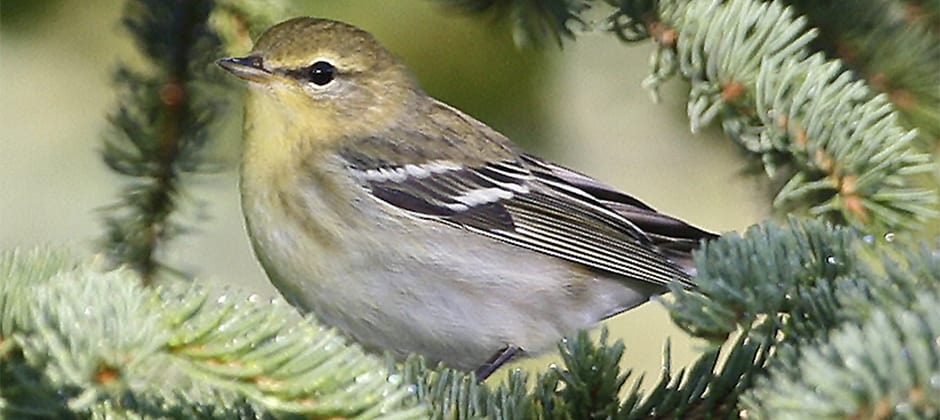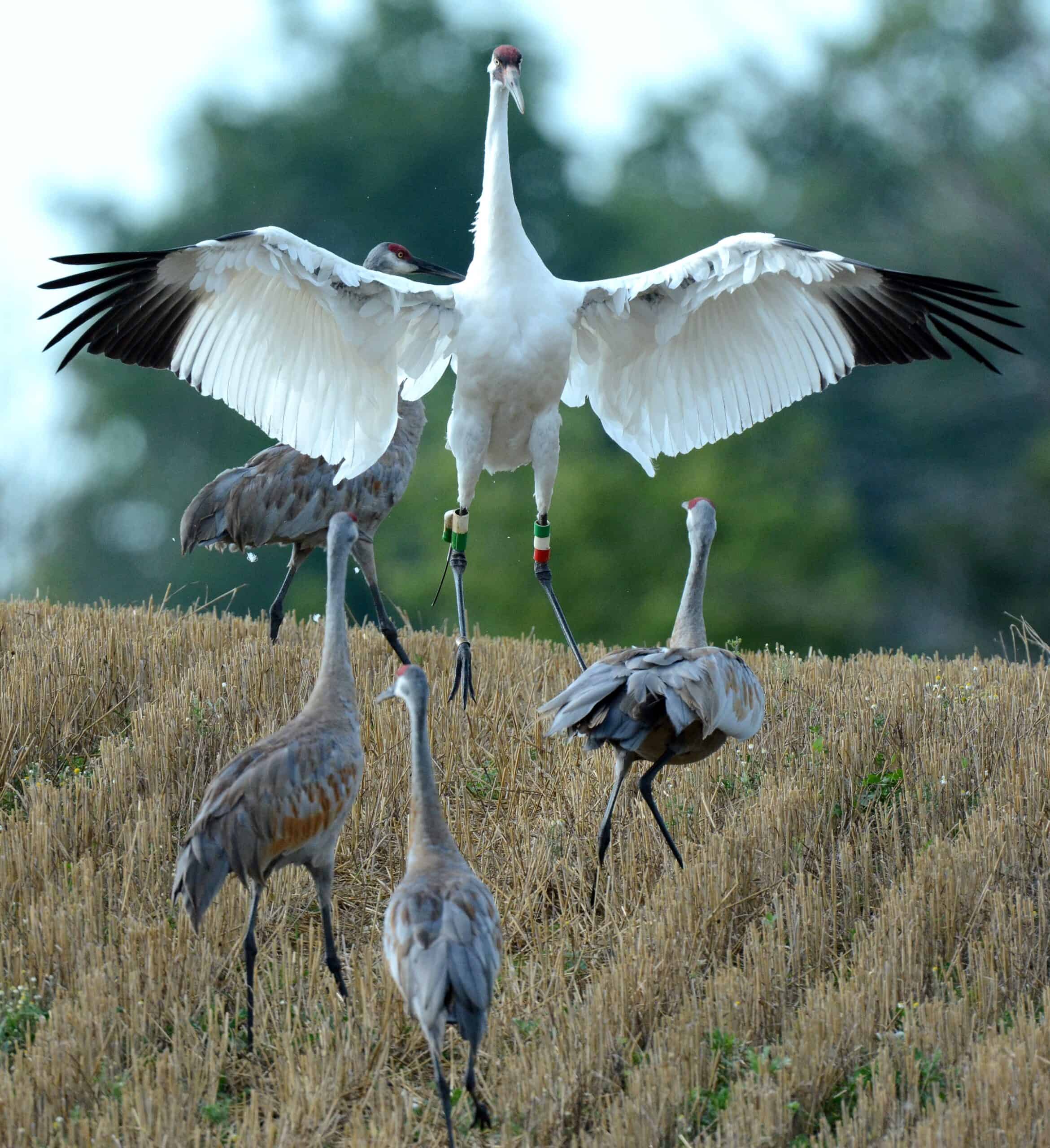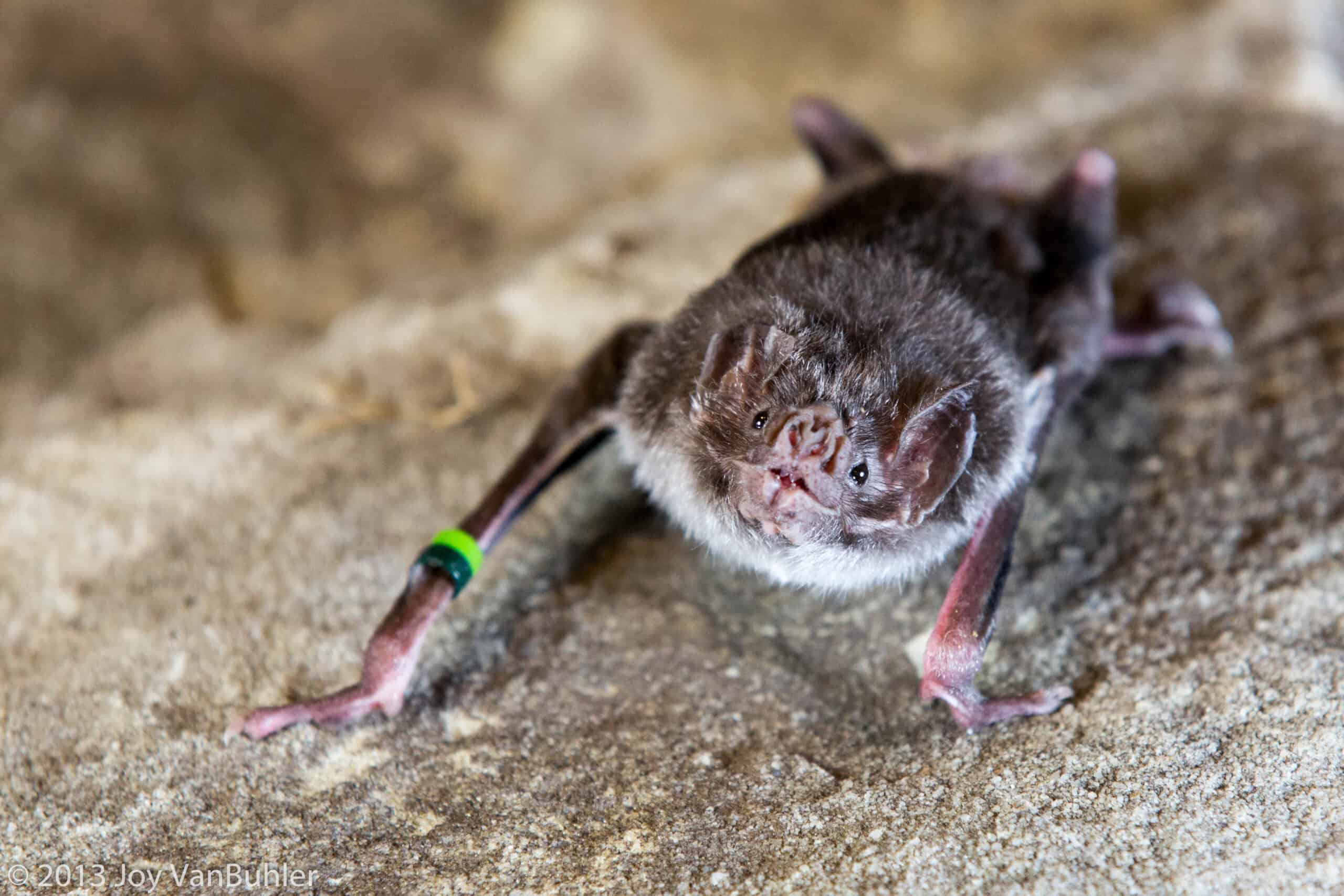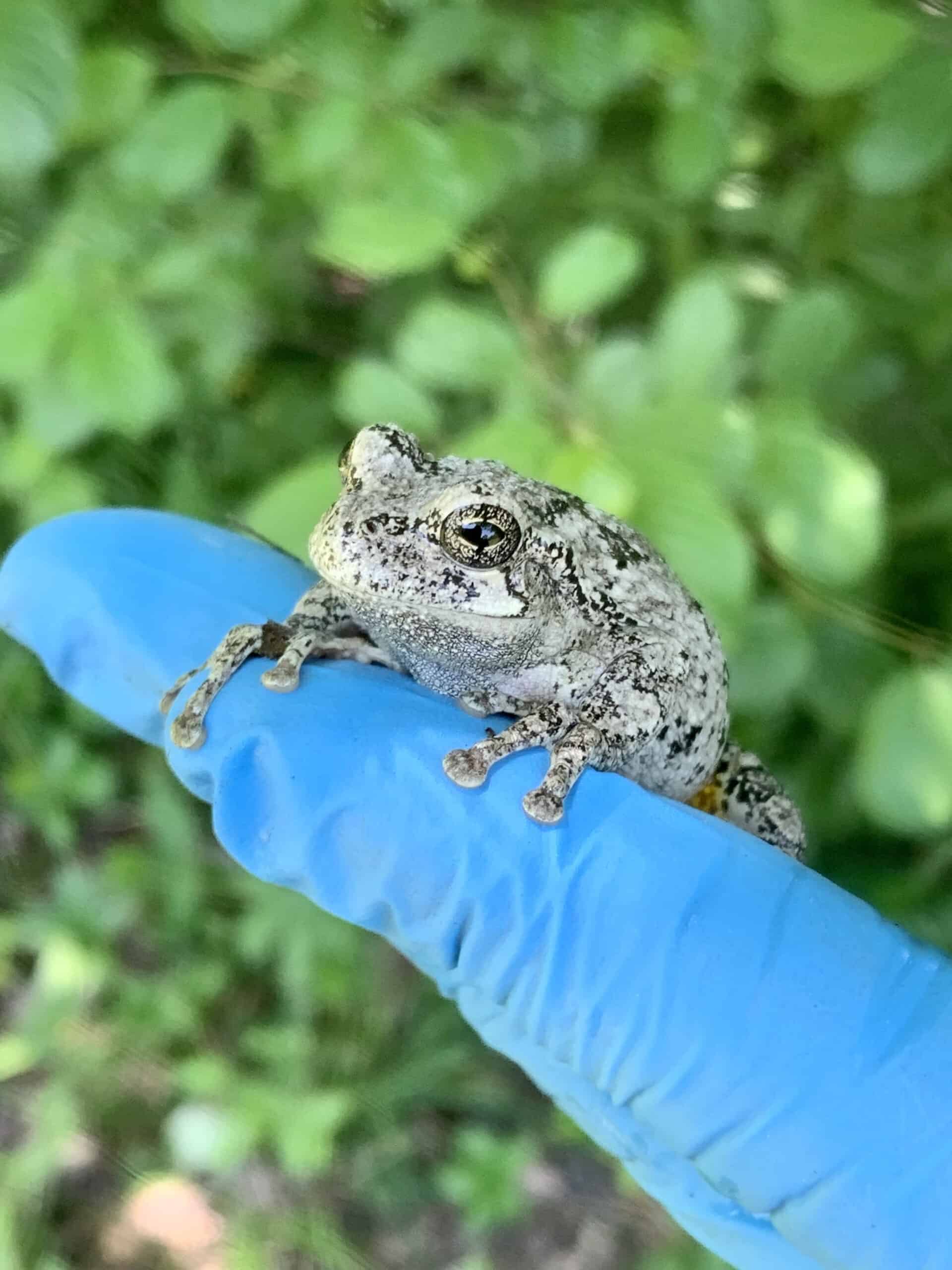Share this article
Tiny blackpoll warblers fly 12,500 miles in yearly migrations
Half-ounce songbirds, blackpoll warblers (Setophaga striata) redefine the meaning of endurance in their epic trip from the northwestern edge of Alaska to the East Coast before continuing on to Venezuela, Colombia and Brazil.
“Quite a remarkable journey for a bird of that size,” said Ryan Norris, an ecology professor at the University of Guelph in Canada and an author of a study published recently in Ecology.
Mapping out their full migratory route may help researchers understand why their populations are dropping.
Previous research by Norris and his colleagues already showed warblers that breed on the East Coast were capable fliers. Blackpolls from as far north as the Canadian Maritimes and New England made three-day flights over the Atlantic to South America for the winter, a journey nearly 1,700 miles long, with a stop only in the Greater Antilles.
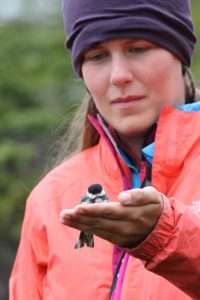
But the researchers knew the birds also bred all across the boreal forest, as far as Nome, on Alaska’s northwest coast. To see how these birds completed their winter migration, they outfitted birds from Nome; Denali, Alaska; Churchill, Manitoba; and Whitehorse, Yukon with about 110 tiny geolocaters before they headed south for the winter. Months later, researchers waited at the same locations to see if the same birds came back, and they managed to recover 27 of these tags.
“To put a backpack on a bird in Nome, Alaska and get a bunch back — it blew my mind that it worked,” Norris said.
They found that the birds flew an average of 60 days every year on their southward migrations. The Nome birds represented the longest flyers, covering 6,650 miles in their total journey. Birds from Churchill on the coast of Hudson Bay flew the shortest trips among the four tracked populations, but even they logged about 4,300 miles.
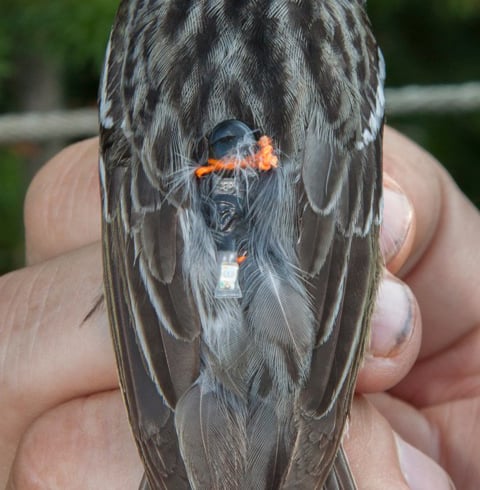
There was some difference in the initial trip, with birds farther from Nome leaving the earliest, so that they all arrived along the East Coast at roughly the same time. The Nome birds spent about 18 days arriving along the coast of the Carolinas, where they spent about 18 days fattening up before a straight 2.5- to three-day journey across the Atlantic to South America.
Understanding the route that these birds take will help inform conservation, Norris said. While the blackpoll warblers aren’t currently listed as threatened or endangered, their populations have been declining at about 5 percent a year. “They are well on their way to be considered as a listed species if things continue,” he said. “This bird is declining at a fairly fast rate — one of the fastest for a fairly small songbird.”
Researchers aren’t sure why they’re declining, but it may be due to habitat loss, or climate change throwing the timing of their migration off with regard to resource availability, Norris said.
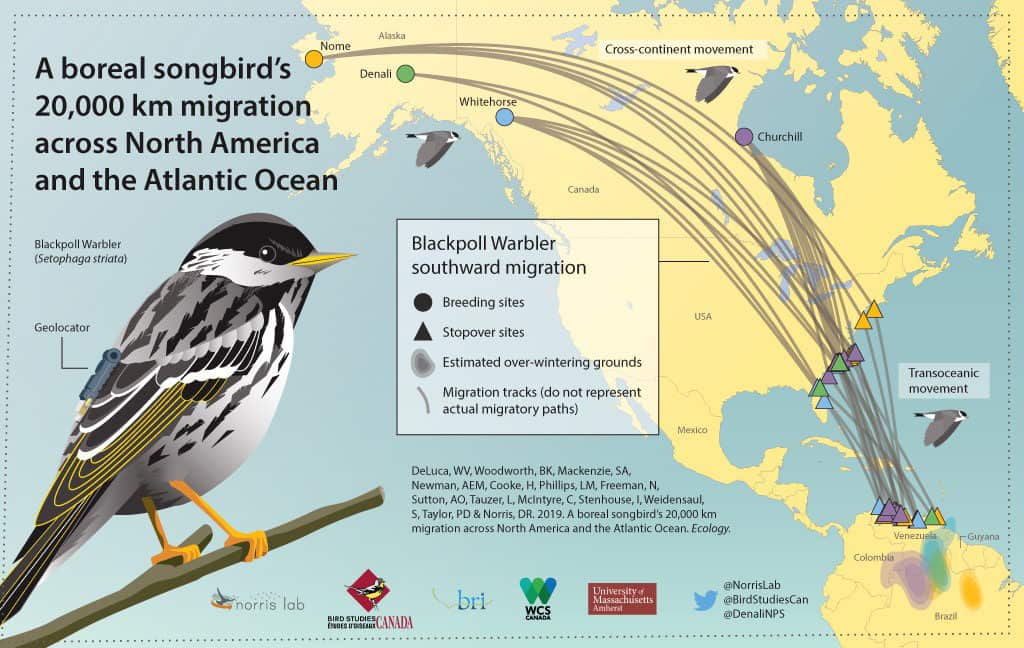
Understanding the birds’ migratory routes could help researchers understand where they might be encountering problems. “If we don’t know how [migratory routes] are connected, there isn’t a way to make progress towards conserving them,” Norris said.
Header Image: Tiny blackpoll warblers make long, multi-stage migrations from Alaska and northern Canada to Venezuela every year. ©U.S. Fish and Wildlife Service



